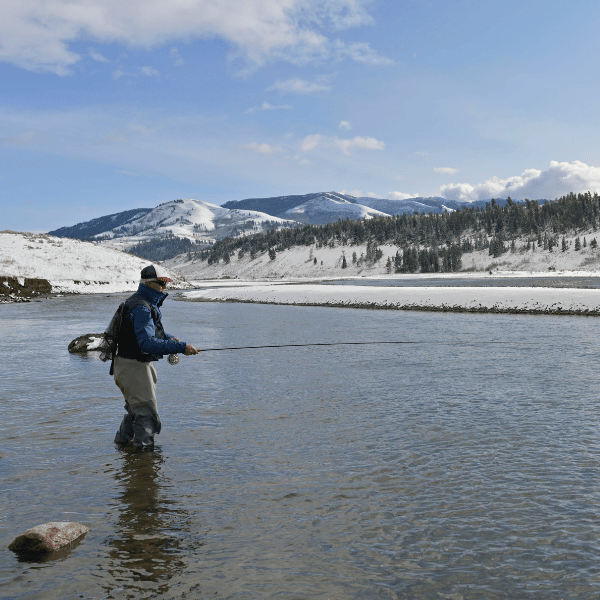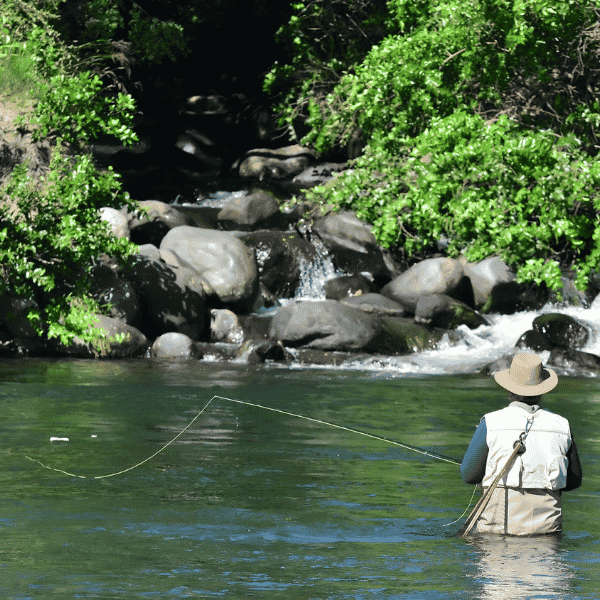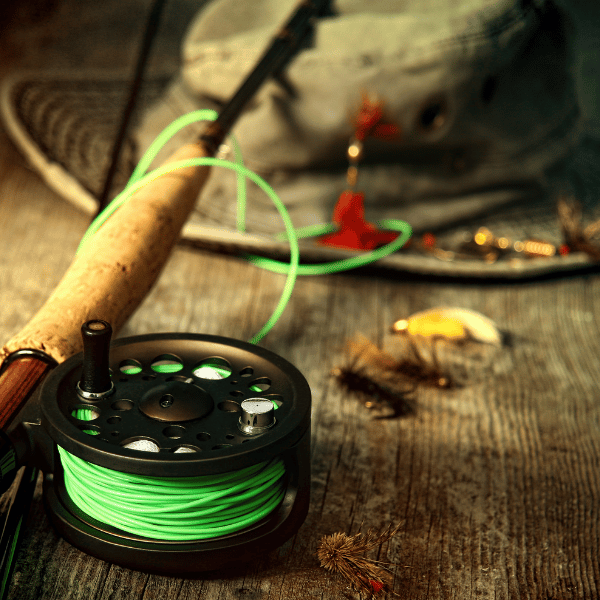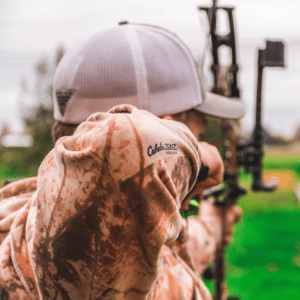Cold Weather Backpacking Gear List
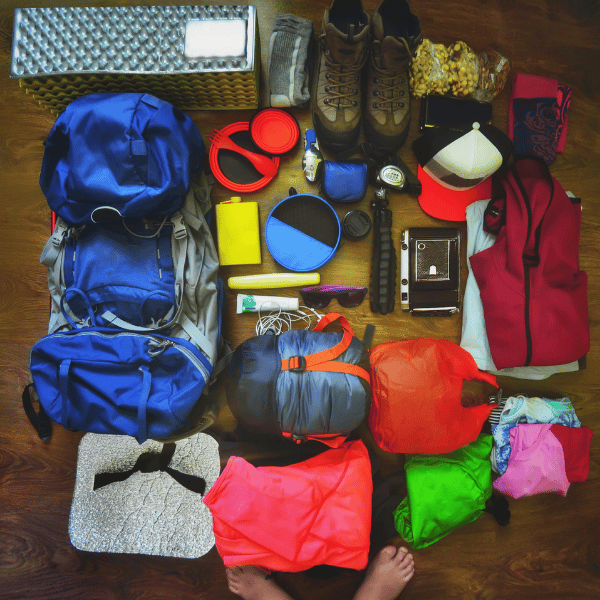
When the temperatures plummet is important to follow a good cold weather backpacking gear list to know what to pack for your trip.
Without proper protection, it doesn’t take long for the cold to work its way through to your bones and to dampen your mood, and in extreme situations, this can be extremely dangerous. At the same time, you don’t want to overcompensate too much only to have to lug an unbearable amount of additional kilos around on your back.
We put together a cold-weather backpacking checklist of what you should pack in your backpack in cooler climates and into winter weather.
Contents
Cold Weather Backpacking Gear Checklist

1) Backpack
Consider the following things when choosing your vessel; is it waterproof? Is it big enough? If you are going somewhere with snow and ice, are there places to attach gear such as ice-axes and crampons for quick and easy access?
2) Jacket
This one is extra important to get right. Investing a little more in a good quality jacket will help you to stay warm considerably longer. Make sure it is fully waterproof and windproof, and be aware that “waterproof” and “water-resistant” are two different things. If it is not particularly warm by itself, ensure that you pack enough additional insulating layers to put underneath when outside.
3) Rain Pants
Rain pants are often overlooked, but when hiking through snow or particularly wet weather, they are essential in keeping your lower layers dry and keeping the hyperthermia out. They usually pack down very small and take up very little space in your pack.
4) Hiking/Outdoor Pants
Make sure these are warm and comfortable when worn with your jacket, your backpack, and your rain pants simultaneously. They should also be flexible enough to allow you to walk normally.
5) Gloves
Many cyclists will tell you that one secret to feeling warm is to ensure your hands and fingers are nice and toasty. Make sure these are windproof and waterproof, and, if going to an extremely cold destination, consider taking mittens instead as your fingers are then not isolated from each other and can warm themselves up.
6) Crampons & Ice Axes
If you are going to a wilderness location with snow and ice, these items will help you to retain your footing and work as an extra measure to stop you from slipping off icy bluffs. When hiking in these conditions, have your ice axes in a place you can quickly reach in case of an emergency. They are best stored on the outside of your backpack. Hiking-poles or snow-poles will also help you to keep solid footing on snow-covered surfaces.
7) Extra Layers
Since neanderthal times, people have been trapping air next to their bodies to keep warm. If you dress like an onion underneath a waterproof and windproof membrane, you have complete customization over how warm you can be. Consider buying specialized outdoor technology to reduce the weight and size of your extra layers. Thermal underwear while very unattractive to look at is highly functional at keeping the heat in.
8) Hat & Scarf
There are plenty of outdoor suppliers with multiple options of these, but the most important thing is that they are warm and comfortable. Remember that you are likely to be wearing them with your waterproof jacket so they should fit underneath the hood and collar comfortably. Consider taking a hat and scarf made from quick-drying materials instead of cotton or wool.
9) Sleeping Bag
If you are brave enough to be camping in cold conditions, invest in a sleeping bag you can believe in. When shopping for your portable bed, consider the places you intend to take it to and the coldest overnight temperature you will encounter. Do not be in denial about this or you may end up in an emergency situation. All high-quality sleeping bags will come with the comfortable and extreme minimum temperature they should be used in, so do pay attention to this when buying. You will find that you will need a much bigger sleeping bag when going to colder climates – do not sacrifice your safety and comfort for some extra space in your backpack.
10) Tent
Like a good sleeping bag, a tent is vital to your survival. Ensure it is strong, windproof, and waterproof. Consider that lower-lying tents meet less resistance than taller tents, and smaller tents, while considerably less comfortable, take less time to warm up in cold conditions. In extreme cases, you may want to consider taking a bevy sack in place of a tent.
11) Insulating Sleeping Pad
It is best not to get the 2$ roll pad from your closest discount store and to invest in something that insulates the base of your sleeping space as much as possible. A lot of the cold temperature in your tent comes from the ground below.
12) Boots
Again, ensure these are both waterproof and windproof. If you are going to snowy locations, really pay attention to the grip on the soles and ensure that it is adequate. If necessary, check your boots are compatible with your crampons, although usually, this is not a problem. Your boots should also be comfortable as you will likely be more or less living in them for the entire time you are out in the wilderness.
13) Socks
The problem with simply layering up regular socks is that you will lose breathability and increase the build-up of moisture around your feet, defeating the purpose altogether. Invest in some thick, high-quality hiking socks to ensure your feet stay dry and comfortable.
14) Cooking Equipment
As always, when going outside, you will need to cook for yourself. Preparing warm food is a great way to retain your core temperature in cooler conditions. Consider taking some extra gas so that can make yourself plenty of hot drinks such as tea to retain warmth and some hydration without worrying about running out.
15) Matches/Lighter/Fire-stone
In order to light your stove, or to light a campfire if it is permitted and possible, you will require some form of ignition. It is not a bad idea to take multiple options, in case one is failing at the moment you need it for whatever reason. Keep these packed somewhere accessible and somewhere dry in your backpack – we suggest keeping them isolated in a waterproof box.
16) Water
Just because it is cold, it doesn’t mean you don’t have to hydrate. Ensure you have enough water with you or at least means to purify enough for the duration of your trip, including for cooking and washing as well as drinking. Keep this somewhere in your backpack where it won’t freeze – for example in a bladder in the back compartment. You can also buy insulating sleeves for water bladders and bottles to ensure that your water stays in liquid form. You can also melt and purify snow by cooking it in a pot on your stovetop.
17) Torch
Cold weather often comes along with shorter days. Take a good torch with you, preferably a head torch so that you can use both hands when needed, and take a spare set of unused batteries to ensure that you have enough power. Having a light in your tent is also very helpful, although not essential if you have enough power in your torch.
18) Hand-warmers
These little chemical pads are a quick way to warm up your hands and a handy item to take with you.
Special Backpacking Cold-Weather Equipment
This boils down to how cold and treacherous the destination you are going to is, so here are a few tips for other special backpacking cold-weather equipment:
- If avalanches are a problem, ensure one person in your party has a shovel and an avalanche transceiver. You may also need skies with ski skins on or snowshoes.
- When camping on snow, make sure you have suitable tent pegs that can penetrate the snow.
- When going really remote, it might be recommended to take a GPS tracker and a satellite phone with you as well as a map in a waterproof sleeve.
- If you are required to take belaying equipment or ropes for safety, ensure that you know how to use these properly and have been thoroughly trained.
- Remember to take everything you normally would when going into the wild. Ensure that you have enough clothes for the entire duration, enough equipment to track yourself and to follow the routes you are taking, and that you have a first aid kit with you and the knowledge to use it correctly.
- Remember that snow is a reflective surface, and so sunglasses and sunscreen should also be taken even if it seems like extra weight for no reason.
- Travel towels, clothes, and other fabrics should be quick-drying to ensure that they will air out quickly enough in cooler temperatures.
- It is always worth packing an extra day’s worth of food and clothing in case of emergencies.
